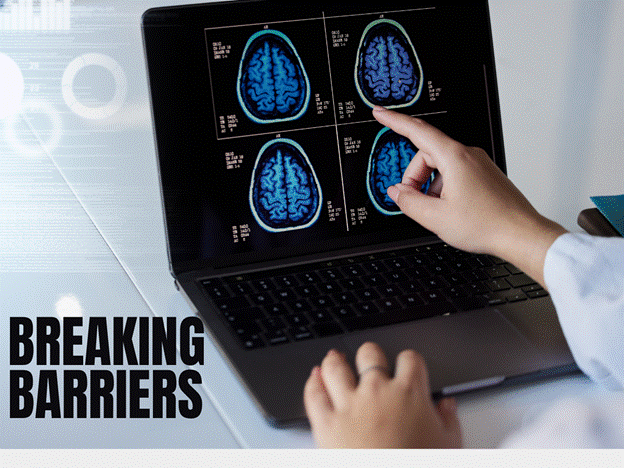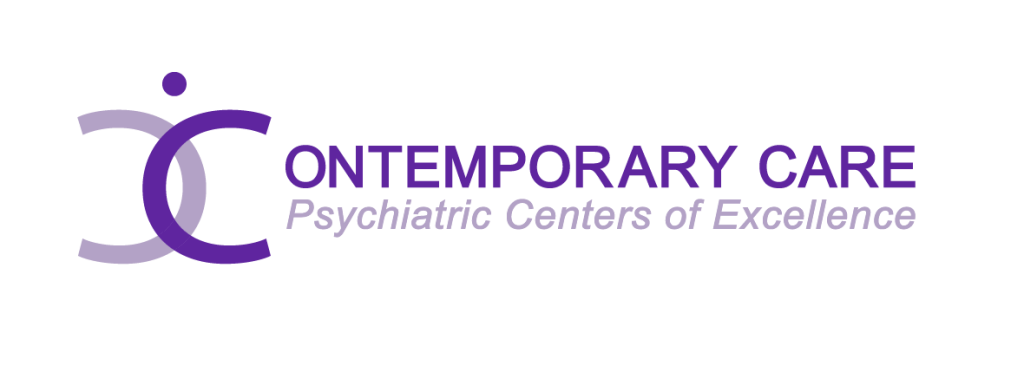In today’s rapidly changing world, where technology is advancing at lightning speed, the idea of mapping the human brain, once thought of as a distant dream, is now a thrilling reality. Thanks to creative scientific research and innovative technologies, we’re diving deep into the complications of the brain, unlocking its secrets like never before. This article is your ticket to explore the fascinating world of brain mapping, shedding light on why it matters and celebrating the incredible advancements we’ve made, especially in terms of the success rates of Transcranial Magnetic Stimulation (TMS).
What is Brain Mapping?
Brain mapping is like creating a detailed map of the brain’s structure and functions. It’s an analysis of the inner workings of our most complex organ. Through a blend of techniques, brain mapping allows us to visualize, analyze, and grasp the intricate networks of neurons and their connections within our brains.
Revealing the Brain’s Mysteries
Imagine peeling back the layers of the brain to reveal its hidden complexities. That’s what brain mapping does. It helps us reveal the secrets of how our brain functions, from areas of the smallest neurons to areas of the brain with the grandest networks.
Visualizing the Unseen
With brain mapping techniques, we can see what was once invisible to the naked eye. It’s like shining a light into the dark corners of our minds, illuminating pathways and connections that were previously unknown.
Understanding the Connections
Every thought, every action, and every memory all stem from the connections between neurons in our brain. Brain map allows us to understand these connections better, giving us insight into how our brain processes information through brain waves and controls our behaviors.
The Evolution of Brain Mapping Technologies
Advancements in technology have been instrumental in shaping the journey of brain mapping, propelling us from the basic studies of the past to the cutting-edge techniques of today. Let’s discuss the fascinating history and evolution of brain mapping technologies:
Magnetic Resonance Imaging (MRI)
The advent of Magnetic Resonance Imaging (MRI) revolutionized brain mapping. This non-invasive imaging technique uses powerful magnets and radio waves to generate detailed images of the brain’s regions.
Functional MRI (fMRI)
Building upon the foundation laid by MRI, Functional MRI (fMRI) took brain mapping to new heights. Unlike traditional MRI, fMRI doesn’t just capture static images, it reveals the brain in action. By detecting changes in blood flow, fMRI enables us to map brain activity in real time, providing valuable insights into how different regions of the brain function.
Advancements in Imaging Resolution and Speed
Over the years, advancements in imaging technology have continued to enhance the resolution and speed of brain imaging techniques. Today, we can capture images of the brain with unmatched detail and efficiency, allowing researchers to search deeper into its complexities than ever before.
Applications of Brain Mapping
Brain mapping extends across a wide spectrum of fields, each with profound implications. Let’s explore some of the diverse and far-reaching applications of brain mapping:
Understanding Neurological Disorders
Brain mapping plays a pivotal role in understanding neurological disorders such as Alzheimer’s disease, Parkinson’s disease, and epilepsy.
Researchers can develop targeted medications and treatments for these weakening conditions by pinpointing psychiatry of brain structure and function to treat patients through brain maps.
Enhancing Cognitive Abilities
Brain mapping offers insights into the mechanisms underlying cognitive functions such as memory, attention, and decision-making.
By understanding how different parts of the brain contribute to Cognitive processes, scientists can explore strategies to enhance cognitive abilities and improve overall brain health.
Personalized Medicine and Treatment
Brain mapping allows the development of personalized and effective treatment plans according to individual patients with different complications.
By analyzing an individual’s unique brain structure and function, clinicians can optimize treatment strategies for conditions such as stroke, traumatic brain injury, and psychiatric disorders.
Consciousness and Mind-Body Connection
Brain mapping sheds light on the neural correlates of consciousness and the complex interplay between the mind and body.
By studying brain activity patterns associated with consciousness and subjective experiences, researchers can deepen our understanding of what it means to be human.
Fostering Collaborative Interdisciplinary Research
Brain mapping creates interdisciplinary collaboration, bringing together experts from diverse fields such as neuroscience, medicine, computer science, and psychology.
Promoting cross-disciplinary partnerships, brain mapping accelerates innovation and drives transformative advancements in science and technology.
Transcranial Magnetic Stimulation: A Revolutionary Approach
Transcranial Magnetic Stimulation (TMS) is a revolutionary technique for noninvasive brain stimulation that has transformed the landscape of brain mapping and neurological research.
The transcranial magnetic stimulation strengthens the connection between the two regions, facilitating dorsolateral prefrontal cortex control of the activity in the subgenual cingulate.
Harnessing the Power of Magnetic Fields
At the core of TMS lies the utilization of magnetic fields to stimulate targeted regions of the brain.
By generating magnetic pulses outside the scalp, TMS can penetrate the skull and induce electrical currents within specific brain areas, modulating normal neuronal activity.
Non-Invasive Nature
One of the key advantages of TMS is its non-invasive nature, eliminating the need for surgical intervention.
Unlike traditional methods that require invasive procedures, TMS offers a safe and painless alternative method for stimulating the brain’s executive functions.
Precise Targeting of Brain Regions
TMS enables researchers to precisely target and stimulate specific brain regions with unparalleled accuracy.
By adjusting the intensity and frequency of magnetic pulses, researchers can modulate neuronal activity in precise areas of interest, allowing for the investigation of neural circuits with unprecedented precision.
Real-Time Assessment of Brain Function
TMS provides researchers with real-time data and insights into brain function by directly modulating neuronal functioning.
By observing the effects of TMS on behavior, cognitive tasks, or motor responses, researchers can explain the functional significance of different brain regions and their contributions to various behaviors and cognitive processes.
Therapeutic Applications
Beyond its utility in research, TMS has emerged as a promising therapeutic tool for treating a variety of neurological and psychiatric disorders.
Clinical applications of TMS include the treatment of conditions such as treatment-resistant depression, anxiety disorders, chronic pain, and motor disorders like Parkinson’s disease.
Exploring Neuroplasticity and Brain Plasticity
TMS offers a unique window into the dynamic nature of the brain, allowing researchers to study neuroplasticity, and the brain’s ability to adapt and reorganize in response to experiences and stimuli.
By applying TMS protocols that induce changes in neuronal strength and connectivity, researchers can investigate the mechanisms underlying neuroplasticity and explore its implications for learning, memory, and rehabilitation.
Challenges and Future Directions
Despite its immense potential, TMS faces challenges such as variability in treatment response, optimizing brain stimulation and parameters, and ensuring long-term efficacy and safety.
Ongoing research efforts aim to address these challenges and refine TMS techniques, paving the way for continued advancements in brain mapping and therapeutic applications.
Success Rates of TMS: Shedding Light on Promising Outcomes
The success rates of Transcranial Magnetic Stimulation (TMS) have become a focal point of interest, drawing considerable attention in recent years. Let’s discuss in detail the distinctions of TMS success rates:
Promising Results Across Neurological and Psychiatric Conditions
- Studies investigating the efficacy of TMS have revealed promising outcomes across a spectrum of neurological and psychiatric disorders.
- From severe depression and anxiety disorders to chronic pain conditions, TMS has demonstrated notable effectiveness in easing symptoms and improving overall quality of life.
Efficacy in Treatment-Resistant Depression Treatment
- Among the most widely studied applications of TMS is its role in the treatment of depression, particularly treatment-resistant depression (TRD).
- Clinical trials have consistently shown that repetitive transcranial magnetic stimulation rTMS can produce significant improvements in depressive mood symptoms, offering hope to individuals who have not responded to traditional antidepressant medications or electroconvulsive therapy.
Addressing Anxiety Disorders
- TMS has also shown promise in the treatment of anxiety disorders, including generalized anxiety disorder (GAD) and obsessive-compulsive disorder (OCD).
- By modulating neural circuits implicated in anxiety regulation, TMS interventions have the potential to reduce anxiety symptoms and enhance emotional well-being.
Managing Chronic Pain
- Chronic pain conditions, such as fibromyalgia and neuropathic pain, pose significant challenges for patients and healthcare providers alike.
- TMS has emerged as a non-pharmacological intervention for chronic pain management, with studies indicating reductions in pain severity and improvements in functional outcomes.
Factors Influencing Treatment Response
- While TMS holds immense therapeutic promise, its efficacy can vary depending on several factors.
- The targeted brain region, stimulation parameters, treatment protocol, and individual variability in response to treatment all play a role in determining the success of TMS interventions.
Individualized Treatment Approaches
- Recognizing the varied nature of treatment responses, clinicians are adopting individualized approaches to TMS therapy.
- By modifying treatment protocols according to each patient’s unique needs and characteristics, clinicians can optimize treatment outcomes and enhance the overall effectiveness of TMS treatments.
Challenges and Limitations
Technical Constraints:
TMS efficacy may be hindered by technical limitations, such as inadequate precision in targeting specific brain regions or limitations in the depth of stimulation.
Overcoming technical challenges requires ongoing refinement of TMS devices and protocols to ensure optimal treatment delivery and effectiveness.
Variability in Treatment Response:
Individual differences in brain anatomy, physiology, and neurochemistry contribute to variability in TMS treatment response.
Identifying factors that influence treatment response and developing personalized treatment approaches are essential for maximizing the efficacy of TMS interventions.
Ethical Considerations:
Ethical dilemmas arise regarding the appropriate use of TMS, particularly in vulnerable populations such as children, pregnant individuals, and those with compromised cognitive capacity.
Ensuring informed consent, safeguarding participant autonomy, and mitigating potential risks are vital in ethical TMS research and clinical practice.
Safety Concerns:
While generally considered safe, TMS may entail risks such as headache, discomfort at the stimulation site, and, in rare cases, seizures.
Implementing stringent safety protocols, monitoring adverse effects, and adhering to established guidelines are crucial for minimizing the risks associated with TMS treatment.
Optimizing Treatment Protocols:
Optimizing TMS treatment protocols involves determining the optimal stimulation parameters, including pulse frequency, intensity, and duration.
Continuous refinement of treatment protocols through empirical research and clinical trials is essential for maximizing treatment efficacy and minimizing adverse effects.
Addressing Treatment Resistance:
Some individuals show resistance to TMS treatment and, therefore fail to achieve the desired therapeutic outcomes.
Investigating strategies to overcome treatment resistance, such as combination therapies or adjunctive interventions, is necessary to improve treatment outcomes and expand TMS therapy’s reach.
Future Prospects
Looking ahead, the future of brain mapping and TMS holds immense promise. Ongoing research efforts aim to refine existing techniques, explore new treatment methods, and deepen our understanding of the brain’s intricate mechanisms. With continued innovation and collaboration, the possibilities are boundless.
Experience the Future of Depression Treatment with Transcranial Magnetic Stimulation (TMS) in Connecticut
Discover a revolutionary treatment for unipolar depression that harnesses the power of magnetic fields to stimulate the brain. This FDA-approved procedure offers a drug-free, safe, and rapid alternative to traditional antidepressants.
At our practice, we have successfully treated over 3000 patients, guiding them toward remission from depression and helping them reclaim their lives. Don’t hesitate to take the first step towards living your best life.
Call us now at 203-792-0400 and embark on your journey to mental wellness. Visit our website at www.contemporarycarecenters.com to learn about how we can assist you. Your brighter tomorrow awaits, reach out today.




